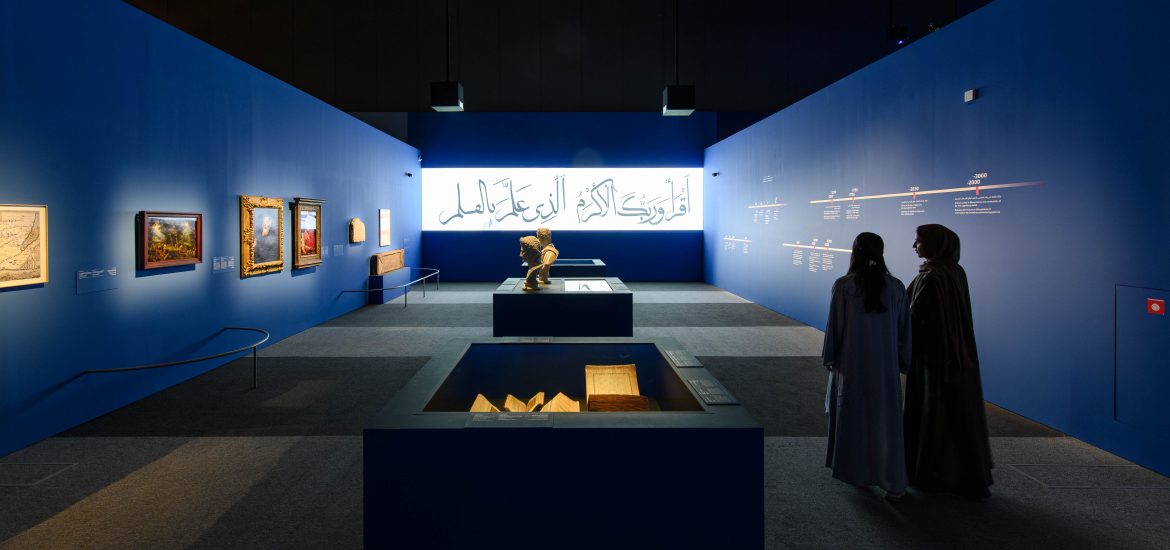From 13 September 2023 to 14 January 2024, an extraordinary exhibit is being held at Louvre Abu Dhabi. “Letters of Light” features some of the most beautiful, significant, and old manuscripts of the three monotheistic faiths: Judaism, Christianity, and Islam. More than 244 pieces of art, including manuscripts, graphic arts, and 3-D objects will be on display, lent from Bahrain, Israel, the United Arab Emirates (UAE), and France. The texts in question are the Bible, the Gospels, and the Quran, and also encompass archeological items and artifacts.
An extensive array of organizations have lent their pieces of art for this exhibit, with four landmark pieces from Louvre Abu Dhabi itself. Other lenders include Bibliothèque Nationale de France and a large number of French institutions, Umm Al Quwain Department of Tourism and Archaeology, Beit Al Quran, Bahrain, National Museum of Ras Al Khaimah, and many, many more.
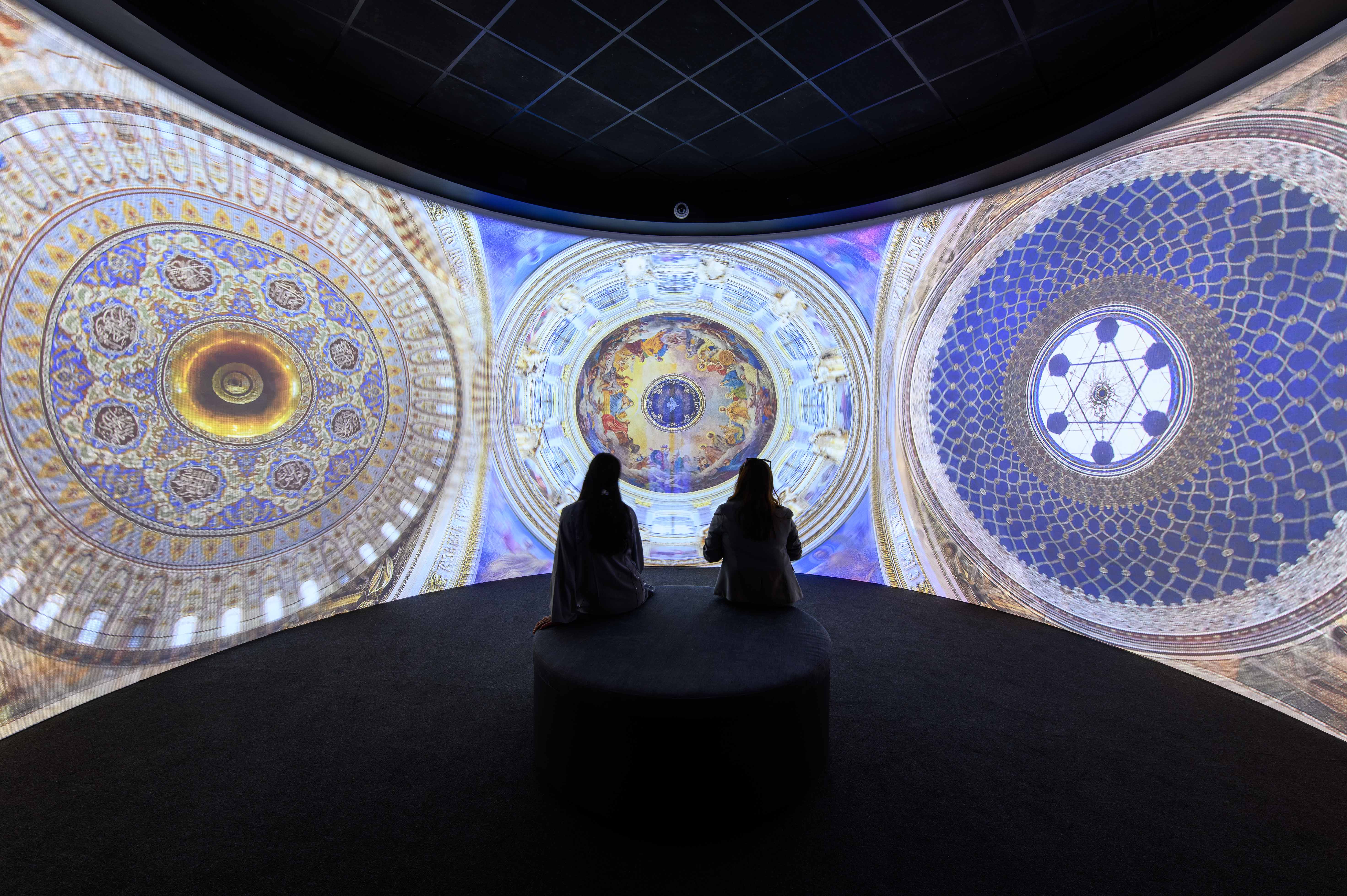
The broad objective of the exhibit is to explore the historical context in which these sacred texts emerged, their transmission over the centuries, associated scholarship and mystical practices, and their vital place in what the Museum describes as “universal intellectual and artistic history.”
But more ambitiously, and relevant to watchers of interreligious relations, the exhibition seeks to “create a dialogue between the three monotheistic traditions while respecting the unique characteristics of each.” According to the Museum’s press release, by highlighting episodes and figures that are shared by all three, the exhibition aims to deepen understanding of the Holy Books that have guided believers in their daily lives for centuries, and to make the texts more accessible by exploring all their aspects.
The exhibit is being curated by Laurent Héricher, Head of Oriental Manuscripts Department, Bibliothèque nationale de France, and Dr. Souraya Noujaim, Director of the Islamic Arts department at Musée du Louvre (he was former Scientific, Curatorial and Collections Management Director of Louvre Abu Dhabi).
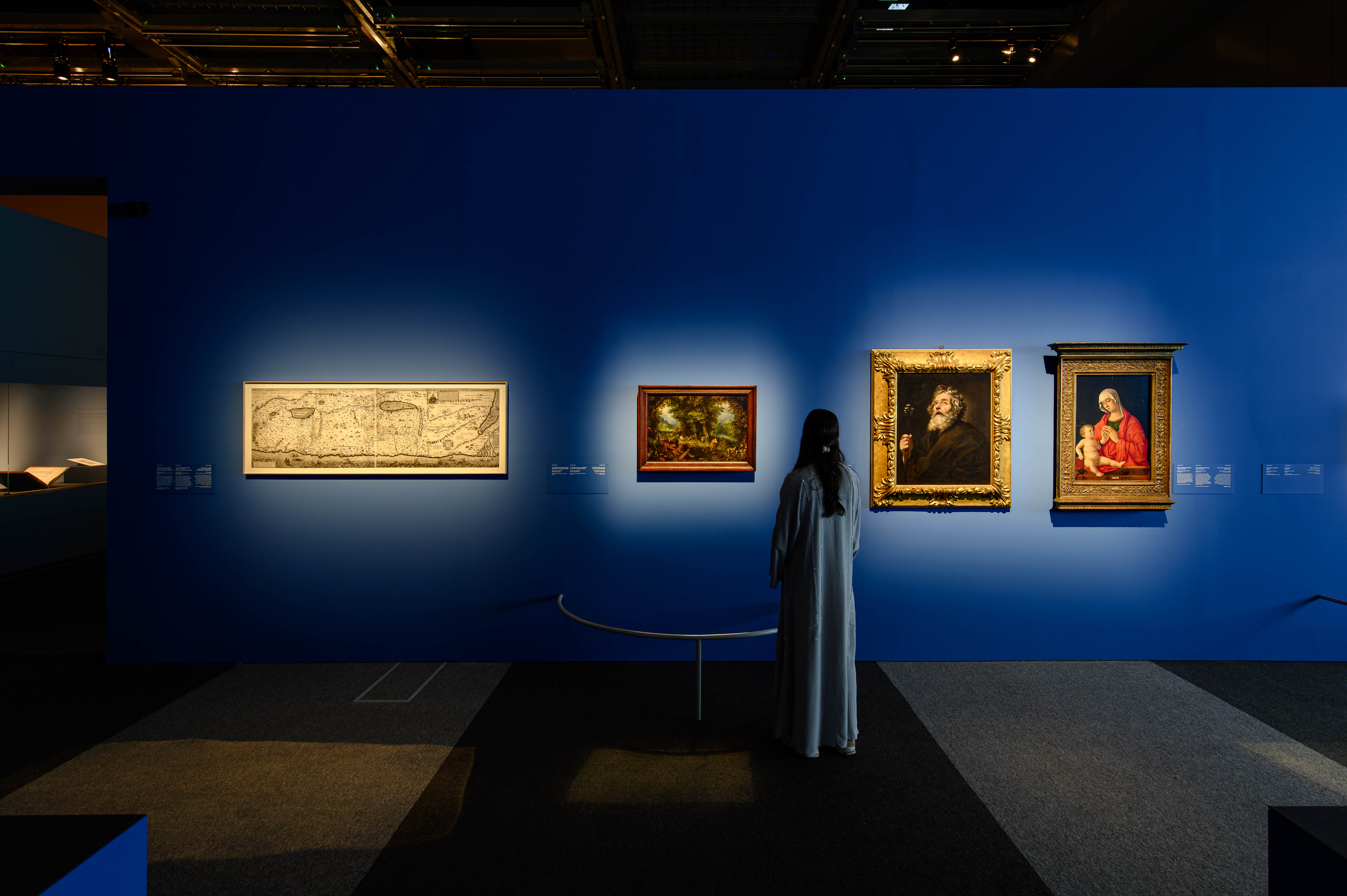
The exhibition unfolds over 7 main sections, which tells, through an immersive and artistic high-tech experience, the shared history of the Abrahamic faiths. We start with the very figure that started it all: Abraham, the Hebrew patriarch who links all three monotheistic faiths. Then the exhibit moves to the development of the individual religions, with Sections 1–5 detailing the histories and practices of the faiths as embodied in the exhibit items. There are several mediation devices that help tell the story presented in these sections.
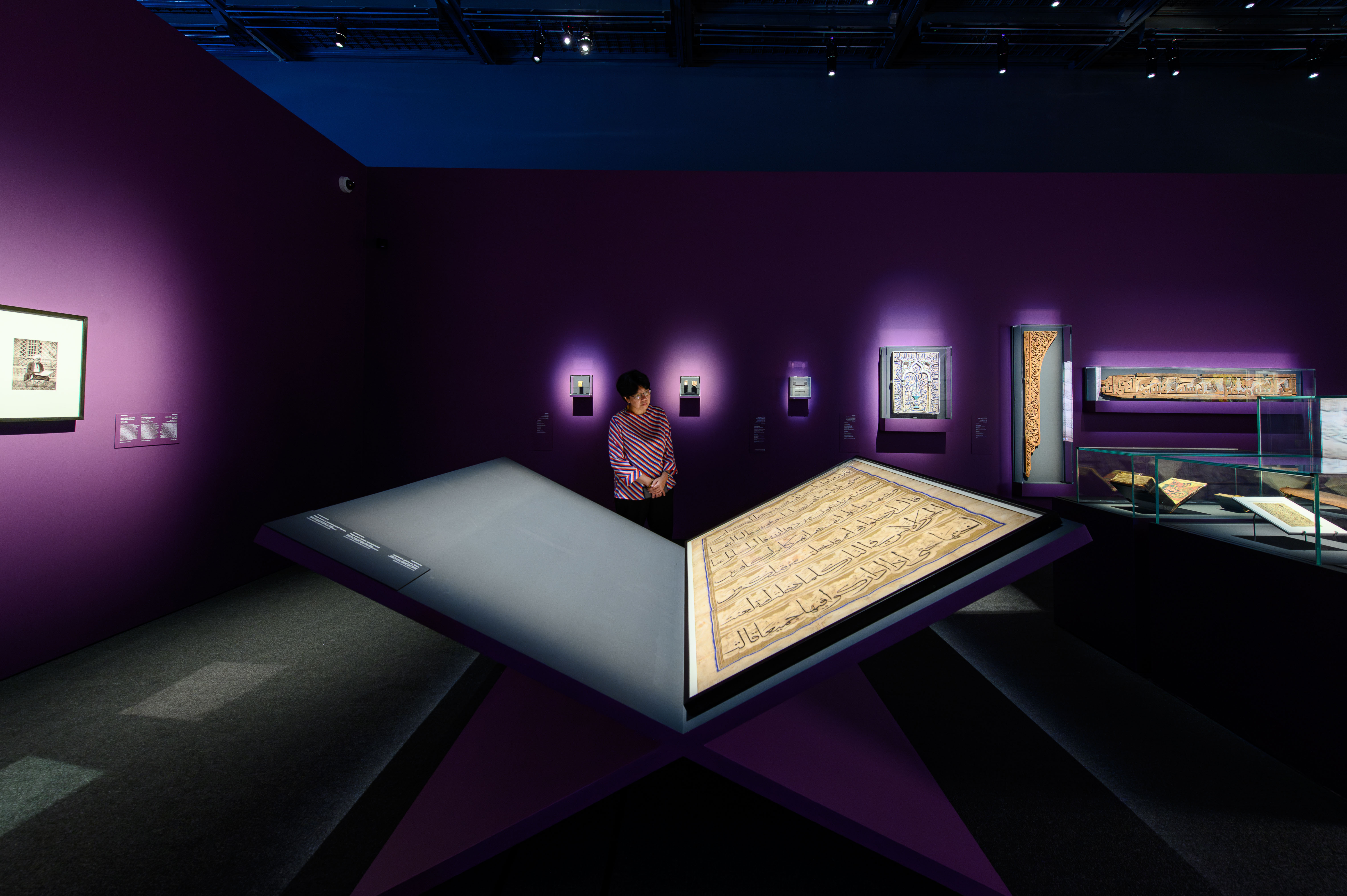
– Prologue: Abraham, the founder
– Section 1: Birth of the three monotheisms
– Section 2: Founding books
– Section 3: Fidelity, sacredness and transmission
– Section 4: Practices
– Section 5: Shields and mirrors of the divine
– Epilogue: The Unseen
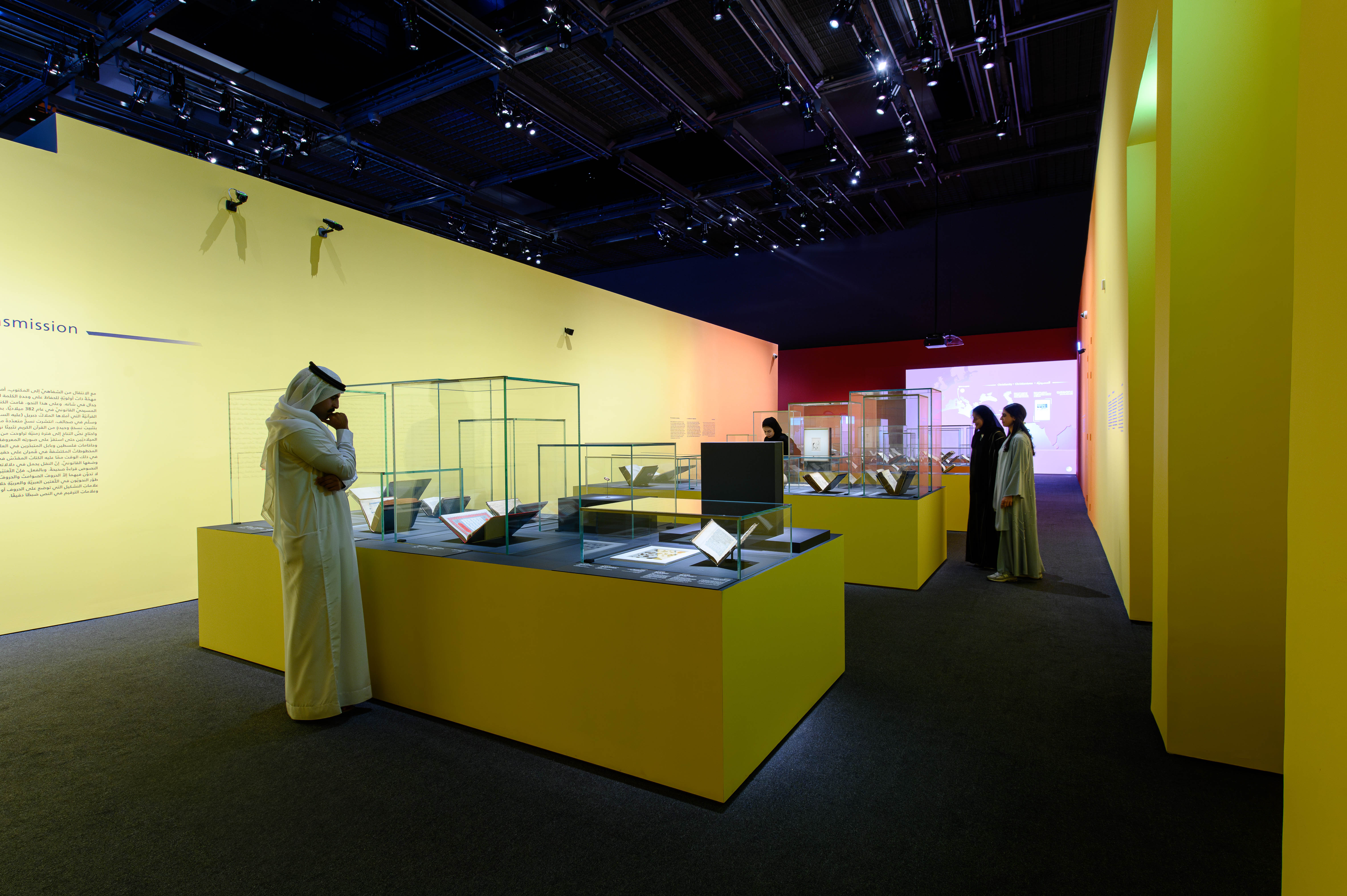
Despite all this materiality being historically dedicated to the worship of God, the Epilogue, “The Unseen,” features a stunning installation by Muhannad Shono that celebrates the hidden majesty of the Abrahamic almighty.
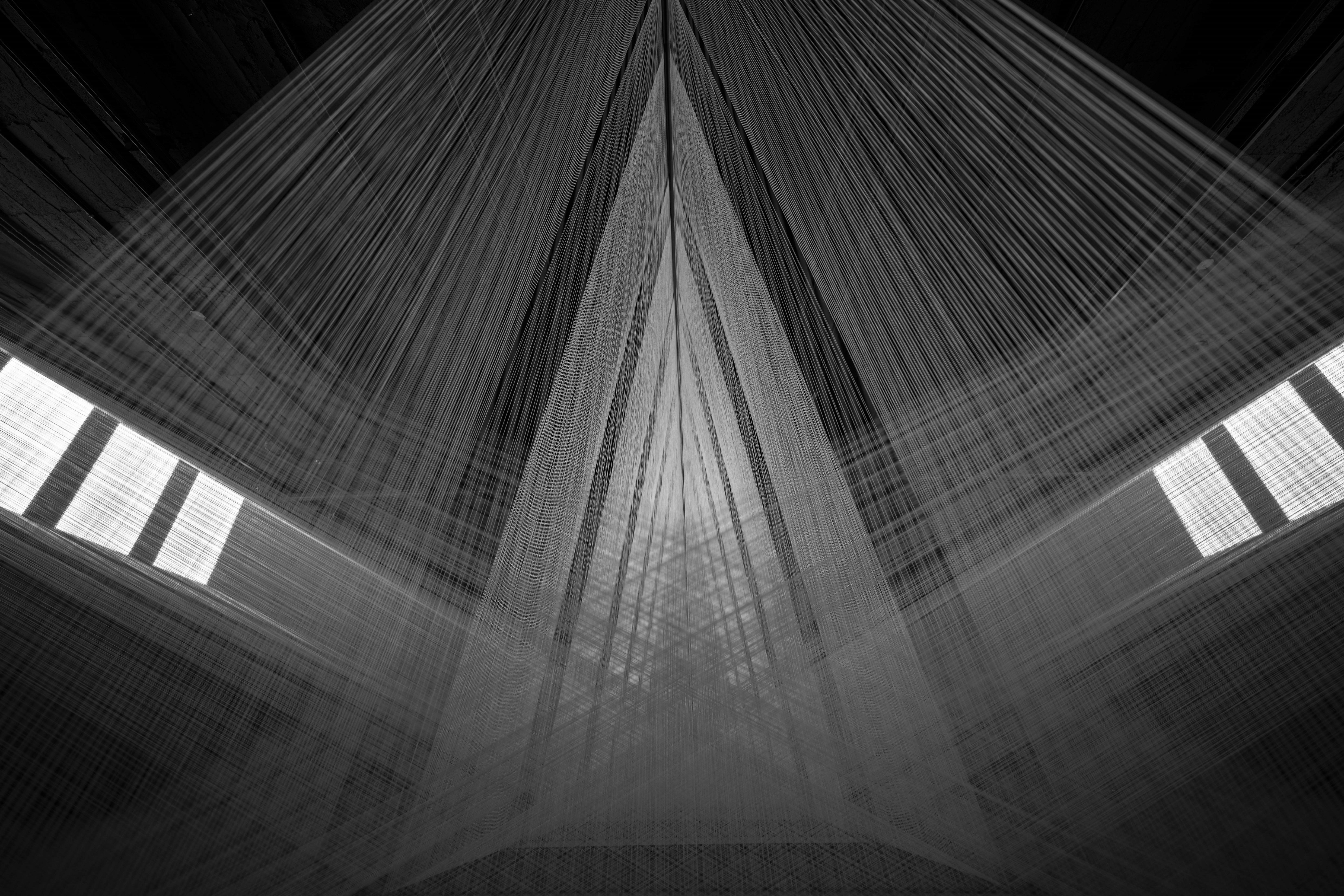
The Unseen
Metal structure, white breaded wires, white LEDs, spotlights, speakers
Abu Dhabi, 2023
© Riyadh, Studio Shono
With the exhibit having opened on the 13th, visitors can expect to encounter some truly sublime objects. Here are just a few:

Bible, Old Testament (Hebrew)
France (?), 1299
Parchment
Paris, Bibliothèque Nationale de France, Department of Manuscripts, Hébreu 7, f. 12v–13
Ⓒ Bibliothèque nationalede France

France, late 12th century
Parchment
Paris, Bibliothèque Nationale de France, Department of Manuscripts, Latin 16746, f. 7v
Ⓒ Bibliothèque nationale de France

Qaṣīdat al-Borda and its taẖmīs or Poem of the Cloak and its anonymous development (Arabic).
Syria, c. 1431–32
Paper
Paris, Bibliothèque Nationale de France, Department of Manuscripts, Arabe 6072, f. 4v-5ⒸBibliothèque nationale de France

In Abraham’s Bosom
France, late 12th century
Parchment
Moulins, Samuel Paty multimedia library, MS–1, f. 256© Médiathèque Samuel Paty, Moulins Communauté
This is an exhibit that the monotheistic faithful can share great pride in. But those of us that adhere to the non-Abrahamic traditions should also not only celebrate it, but invest active interest in it as well. To serve as a museological interface for the great world faiths is one of Louvre Abu Dhabi’s core strengths, and many parts of its permanent exhibits already do so (you can read how they have accomplished this in my interview with museum director Manuel Rabaté). But by “pulling focus” to the holy scriptures, the very letters and words of faith, the exhibit will engage the monotheistic traditions in a meeting of material culture and recorded, textual heritage.
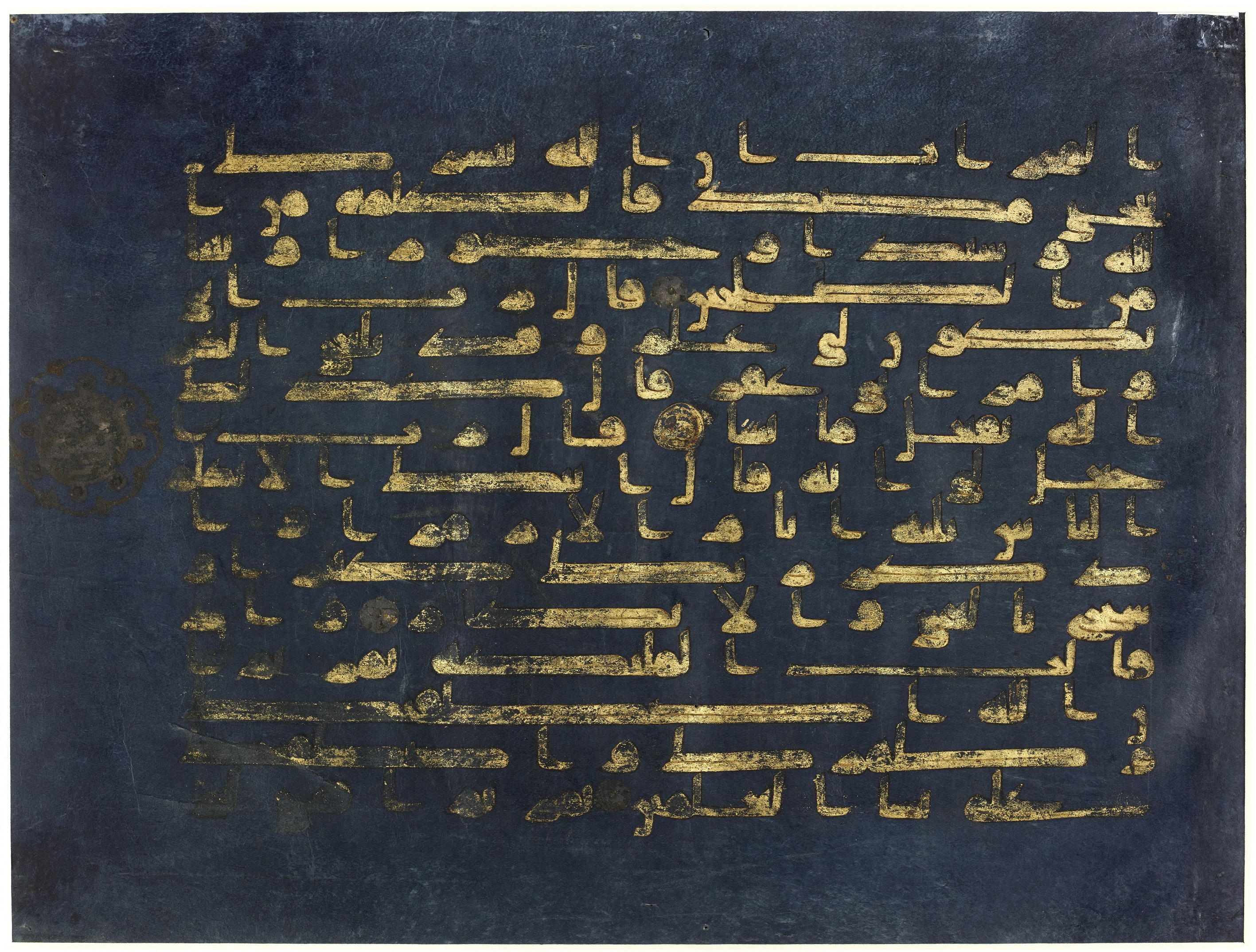
Surah 2, Al-Baqara (The Heifer)
North Africa
900
Gold, opaque pigments and silver on blue-dyed parchment Abu Dhabi, Louvre Abu Dhabi
© Department of Culture and Tourism – Abu Dhabi / Photo APF
Given the extremely high quality of the curation, there seems every reason to believe that the objective of creating a dialogue between the monotheistic traditions will be fulfilled thoroughly. And this may well open the pathway for future exhibits that involve the Museum curating a less traditional encounter than one between Judaism, Christianity, and Islam: perhaps, for example, meetings that bridge them with Buddhism, Hinduism, or non-monotheistic traditions.
Such adventurous exhibits will demand expert curating, perhaps even some input concerning sensitivity from theologians that understand interreligious relations or comparative theology. As such, they might not be on the immediate horizon. But that day may well come, and the Museum is already connecting the Arab world and the rest of Asia at multiple levels. The curation of spirituality at Louvre Abu Dhabi is well on its way to being truly universal.
“Letters of Light” is organised by Louvre Abu Dhabi, Bibliothèque nationale de France, and France Muséums.
Related features from BDG
Guanyin in the Desert: Louvre Abu Dhabi’s Director Manuel Rabaté on Universal Faith and Beauty


